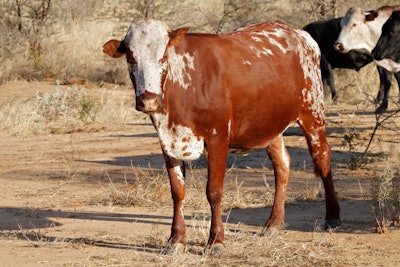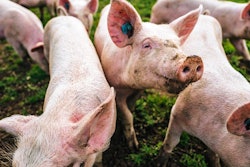
Nambia’s latest outbreak of foot-and-mouth disease (FMD) threatens its future beef exports to the US, while the Brazilian government has declared a series of extensions to its FMD-free zones.
Fears have been raised in the U.S. that foot-and-mouth disease (FMD) could be transmitted to its cattle and swine populations through meat imports from Namibia. In the southern African state, one outbreak of the disease was confirmed this month.
FMD is a threat to every cattle industry, and the National Cattlemen’s Beef Association (NCBA) has highlighted the risks to the U.S. after reports of the latest Namibian cases. The association has called on the U.S. Department of Agriculture (USDA) to ensure that measures taken by Namibia are effective to ensure its beef exports pose no health risks to U.S. cattle.
If the cordon fence, security of the buffer zone or other FMD protocols are deficient in Namibia, NCBA urged the USDA to suspend immediately imports of beef from the country.
Namibia: First African country to negotiate beef exports to US
After 18 years of negotiations, the first consignment of beef left Namibia bound for the U.S. in mid-February of this year. It was the first African country to be granted eligibility to export bovine meat to the U.S., according to the USDA Foreign Agricultural Service (FAS).
Making up this first consignment was 27 metric tons of minced boneless beef from Meatco, Namibia’s state-owned meat processor. The firm opted to initiate the trade with the single minced product.
Over the past 5 years, the U.S. has imported on average around 1.1 million tons of beef annually from many countries. While the initial trade from Namibia will not significantly impact the overall situation, Meatco hopes to expand the volume and variety of beef products exported to the U.S. In the future, it plans to ship a range of high-end cuts for health-conscious American consumers.
For the same period, Namibia has exported an average of around 22,000 tons of beef each year. Main destinations have been South Africa, the United Kingdom and The Netherlands.
Namibia’s latest FMD outbreak
Officially, central and southern regions of Namibia are recognized as free of FMD without vaccination. This official status is conferred by the World Organisation for Animal Health (OIE). However, the northern part of the country — along with neighboring areas to the north in Angola and to the west in Botswana — have no official FMD status with the OIE. These two areas are separated by a veterinary cordon fence.
This month, the Ministry of Agriculture, Water and Forestry registered a new outbreak of FMD. It was Namibia’s first outbreak of the disease since February, according to the official report to the OIE. FMD virus was detected in 13 animals out of a group of 657 at a village cattle crush in the northeast of Kavango East on September 25. Located to the north of the fence, this area is in the northeast of the country, and borders Angola and Botswana.
As a result of the findings, the government immediately imposed a ban on the transportation of all cloven-hoofed animals in the area north of the veterinary cordon, including Kavango East. The ban aimed to prevent the further spread of FMD, reported The Namibian. Movements of these animals were also halted between Angola and Namibia. Except for the purpose of vaccination, all animal gatherings were suspended. This included auctions and slaughtering. Officials called for the cooperation of the public, as well as setting up roadblocks to control traffic.
No further FMD cases have been officially registered in Namibia since the September 25 outbreak.
Brazil makes progress on FMD status
Two months ago, the Brazilian agriculture ministry declared additional states as being free of FMD without vaccination. This status will enable these areas to participate in international trade, according to Minister Tereza Cristina.
States that have achieved this transition in health status are Acre, Paraná, Rio Grande do Sul, and Rondônia, along with Amazonas and Mato Grosso. In May 2021, the Brazilian government expects that these changes will be officially recognized by the OIE.
According to the OIE’s latest update (in June 2020), almost all of Brazil is FMD-free with vaccination. The only exception is the southern state of Santa Catarina, which has been free of the disease without vaccination since 2007.
In June, members of OIE’s World Assembly recognized changes to the FMD status of four countries. Included was one zone of Brazil, which was raised to FMD-free with vaccination.
















